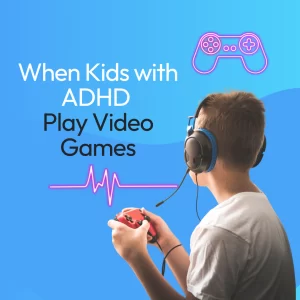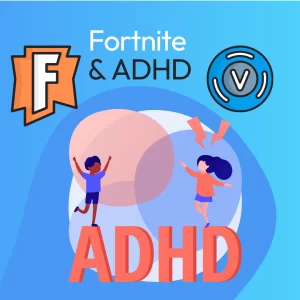Acceptance and commitment therapy (ACT) is a behavioral therapeutic approach. The goal is to support people in establishing patterns of behavior that result in a fulfilling and meaningful life. Often, it is the case that moving toward goals we set for ourselves can be very difficult—think New Years Resolutions! The reason New Years Resolutions can be difficult to maintain is because if it were something that we truly valued, we would not wait until new years to start walking-the-walk. If eating healthierwas something that I truly valued I would be doing it, not waiting for some arbitrary point in the future. Moving towards goals can often bring up negative feelings: waking up early to exercise is obviously sacrificing the sleep that we all so much enjoy; making commitments to a healthy diet is to sacrifice the delicious carb-filled treats that satisfy us at the deepest levels. But, we know that when our goals are based on our values, we move toward the things that matter even though doing so may not be pleasant in the short-term. The other problem that we discussed in previous posts is the idea that even when we accomplish our goals, we only receive a marginal and temporary bump in “happiness,” and instead of being discouraging this temporary happiness bump, coupled with our biological instinct to tackle the next challenge, is enough to keep us racing after the next goal/promotion/Amazon purchase, etc. The consequence of this kind of psychology is that it is coupled to a state of living in perceived deprivation. Trying to grasp happiness simply by achieving goals is living in a world where the thing that is important is chronically missing, present only in the hope that it will someday arrive. This is why our prior post on the difference between goals and values is such an important idea. When we chase goals, we fuse to the idea that if accomplishing the goal is ‘good,’ then the state of having not accomplished the goal is ‘bad.’ And is not difficult to see how that could 1) pull us away from committed action and lead us to avoiding tasks that we know are meaning, and 2) pull us out of living in the present moment and cast us into a world where we are constantly missing the miracle of the present moment for the potential of the future.
So, if the purpose of values is to moderate our behavior and help us experience a meaningful life then we ultimately need to act on those values in order to create the world that we want to live in. That is the idea of Committed Action, the final step in the ACT model. Steven Hayes suggests that “committed action is a choice to behave in a particular way on purpose…so that individual moments of action have the potential to lead to larger patterns of values-based behavior.” We might think about a marriage as one example. In my marriage, if my wife brings me coffee in the morning and it makes me grateful for the relationship we have together, it is not directly related to the coffee. After all, my co-worker brought me coffee last week, and I am not married to them! So, what is it about my wife bringing me coffee that makes me reflect on how grateful I am for the relationship? My wife bringing me coffee is not viewed as simply a cup of coffee, it is a reflection of our long history together, our families bonded together, the life we have built together, and the future that we hope to reside in. You discover that marriage is not really one giant thing, but a million little decision over a long period of time. Which is what the notion of ‘individual moments of action having the potential to lead to larger patterns of values-based behavior’means to me.
Although we don’t want get caught living from goal-to-goal, goals are still an important part of life, and should be related to our values. Once we consider our values, we should be developing goals—specific achievements sought after in service to a particular value—that are in line with those values so that we can consider what actions can be taken to move us closer to those goals. Slow and incremental improvement can move us forward momentously over time—and we should start by asking how can we become a slightly better version of ourselves tomorrow? When I think about the smallest areas of my life that I could improve, those tasks start to feel manageable. I should think about each of the areas of my life where I exist (e.g., domains: family, friendships, school, sports teams, community, health, spirituality, etc.) and consider what is my valued direction in this area—what do I want—and what is the smallest step that I could take to move forward? This kind of process is at the heart of behavioral therapies commonly used in mental healthcare because they work so well! When we consider our goals, we should try to break them down into steps that are as small as we can manage, while being slightly difficult and out of our comfort zone. We definitely don’t want to fail outright, because that would be very discouraging, but we want to engage at level that we COULD fail but probably won’t. If I want to exercise it might not be realistic for me to go for a run, but it could be realistic for me to go for a walk! Similarly, there may be times where we don’t even know the scope of the goal we are trying to accomplish. Think about setting a goal of not playing video games, or not spending too much time on social media. An initial goal might be something ambiguous, like “I want to spend less time on social media,” or “I want to spend less time playing games;” however, those are not goal that are easy to monitor. You could start by taking the smallest step possible: Figure out how many hours per week you actually spend playing video games/using social media. That will not require us to do anything but watch the clock. And once we figure out that we spend 4 ½ hours per day playing games/on social media, we can wrap our minds around the hours per week (18), and what that might mean for us to change our behavior.
So let’s recap: 1) pick a domain in your life; 2) identify the valued direction you would like to move; 3) create a goal—an attainable event related to a particular value; 4) identify the barriers that may exist; and finally, 5) break your goal down into the smallest chunk possible that would still be both challenging AND attainable. Doing these things is going to keep you on the path to committed action, and making those small decision every day that will add up to a lifetime of value and meaning!!




1 thought on “Committed action – The final piece of our puzzle”
Pingback: What is Leadership? - Stand 4 Kind - Leadership - Values & Leadership